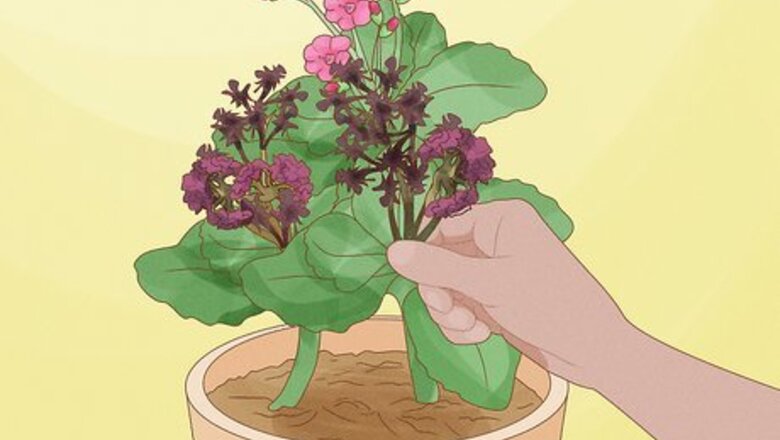
views
X
Research source
Pruning during the Blooming Season
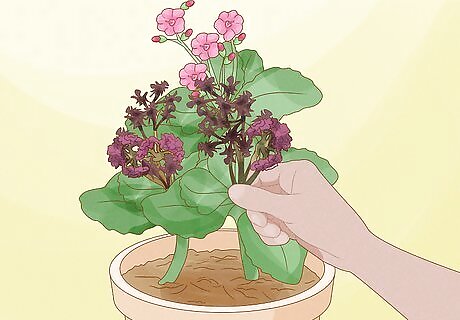
Remove spent blooms immediately. Pinch off dead or dying blooms as soon as they appear. Leaving dead blooms on the plant not only looks bad, it also keeps the plant from growing new blooms. You can pinch off dead blooms with your fingers, or snip them off just below the base using standard pruning shears.
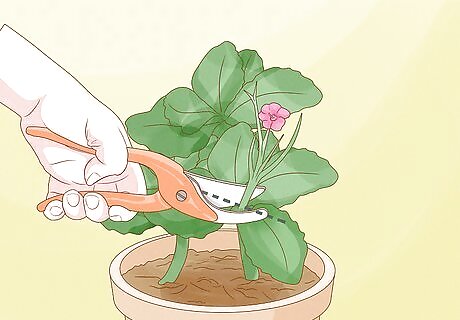
Cut back flower stalks after removing spent blooms. Use standard pruning shears to trim the flower stalk back to the second or third leaf. This encourages branching so that your plant will grow fuller with wider leaf coverage. Make sure your pruning shears are sharp and clean so that you don't injure your plant or introduce disease. Disinfect your pruning shears with rubbing alcohol or bleach diluted in water. This helps prevent the spread of infection between plants.

Take out dead or damaged leaves and shoots. Cut off yellow, brown, or decaying leaves and stems at the base, slightly above where the branch meets the stem. Broken or damaged leaves and stems should be removed using the same procedure. Inspect the plant carefully to make sure you've removed all signs of decay or disease, or it may continue to spread throughout your plant. Removing dead and damaged foliage keeps your plant healthy and attractive.
Pruning after the Blooming Cycle

Cut back tall growth when it finishes blooming. Kalanchoes will rebloom year after year, but they require a little extra care to do so. Prune your kalanchoe down after it has finished blooming for the year and remove all flower stalks to get it ready. Your kalanchoe might get stretched out and leggy if it's not getting enough sunlight. If your plant looks leggy after pruning, move it to a location where it will get plenty of direct sunlight. You may also want to repot your plant in a slightly larger pot to encourage bushy growth. Place it in a sunny, warm spot, such as next to a window.
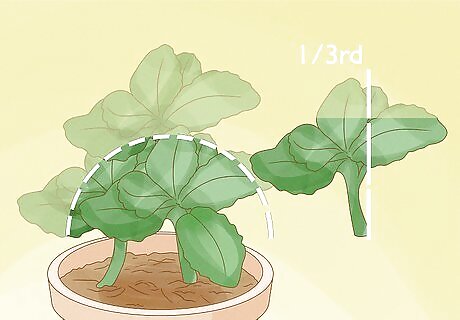
Remove up to a third of each stem's length. After blooming, prune your kalanchoe down to encourage strong, healthy growth next season. Pause as you go and step back, keeping an eye on the overall shape of the plant. If a stem is dead or damaged, cut it down to the base, just above where the branch meets the stem.
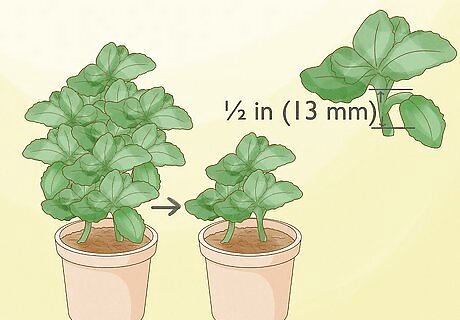
Cut within ⁄2 in (13 mm) of a leaf node to shape the plant. Find a leaf node that is pointed in the direction you want the stem to grow. Cut the stem at a 45-degree angle using sharp, clean pruning shears. New growth will branch in the direction of that leaf node. The lower side of your angled cut should be at roughly the same height as the leaf node, on the other side of the stem.
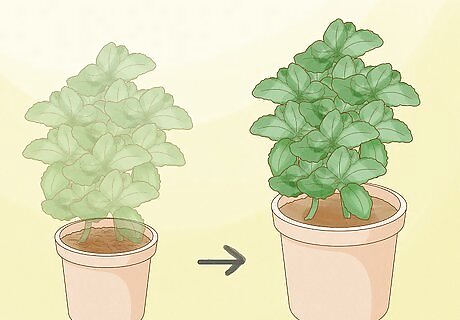
Repot or root-prune as necessary. Succulents, including kalanchoes, grow slowly. Because of this, they typically can live in the same pot for several years. However, if you succeed in getting your kalanchoe to rebloom for several seasons, you may need to move it to a larger pot eventually. If you see roots above the soil or growing out of the drainage holes in the pot, that's a sign that your kalanchoe may be root-bound. Transferring it to a larger pot will allow it to continue to grow. If you want to keep your kalanchoe roughly the same size, remove it from the pot and carefully prune its roots.




















Comments
0 comment